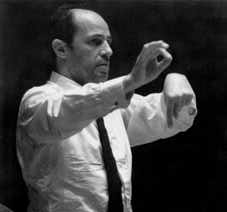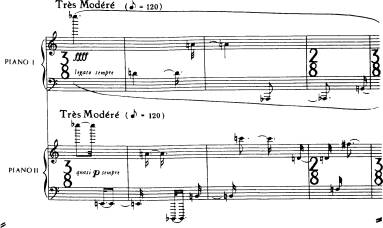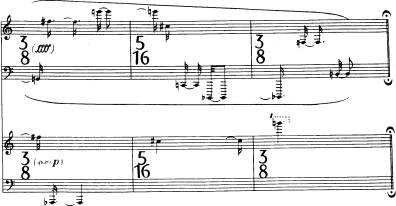 Pierre Boulez (1925 - )
Pierre Boulez (1925 - )
The work itself is in three sections, of which the first, Structures 1a is the most rigorous. For the first part, Boulez chose a quotation from a seminal work of his teacher Messiaen, the Mode de valeurs et d'intensites to be his tone row. The choice is a particularly apt one, for it was Messaien's work that offered up the proposal that the techniques of twelve-tone composition could be applied to dimensions other than that of pitch. Tables were consulted to determine the duration of each note, its dynamic (loudness or softness), and the interaction of the individual pitches. The movement is in twelve sections and can perhaps be thought of as a theme-and-variations on the abstract relationships of the tone row. The listening chart below reflects Boulez's divisions in the score.

